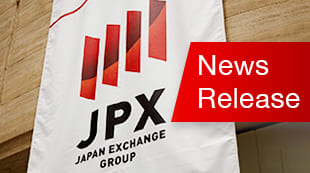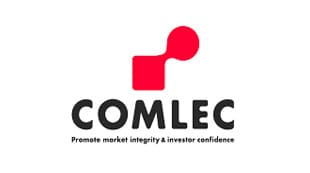Search results 471-480 / 10648
- sort:
- relevance
- latest

New Listing (annual) | Listed Issues - ETFs | Japan Exchange Group Listed Issues - ETFs New Listing (annual) Listed Issues Archives: 2025 2024 2023 2022 2021 Listing Date Index Code Fund Name Management Company Trading Unit Trust Fee Jul. 30, 2025 Nasdaq-100 Top 30 Notional Net Total Return Index JST Fixing JPY 392A iShares Nasdaq Top 30 ETF Indicative NAV BlackRock Japan 10 0.40 Jul. 24, 2025 Nikkei 225 High Dividend Yield Stock 50 Index 399A Listed Index Fund Nikkei 225 High Dividend Yield Stock 50 Indicative NAV Nikko Asset Management 1 0.15 Jul. 18, 2025 - 394A Sector Restructuring Select ETF TV Indicative NAV Active ETF (Specialized) Simplex Asset Management 10 0.90 Jul. 18, 2025 - 395A Sector Restructuring Select ETF Regional Banks Indicative NAV Active ETF (Specialized) Simplex Asset Management 10 0.90 Jul. 18, 2025 - 396A Sector Restructuring Select ETF Event-Driven REITs Indicative NAV Active ETF (Specialized)...

Overview | Market Making Incentive Scheme | ETFs | Japan Exchange Group Overview of ETF Market Making Scheme Overview Market Makers Application Form Sponsored Market Making Q&A ETF Market Making Scheme Ver2.0 Awards for outstanding ETF market makers With the background of growing importance of the people's stable asset forming, TSE has introduced ETF Market Making Incentive Scheme since July 2, 2018, in order to improve the liquidity of ETFs, which are one of the products that contribute to small-amount diversified investment. TSE designates market makers for each issue based on the application and will provide incentives to designated market maker who fulfilled the obligation. With continuous quote by market maker, a sufficient amount of orders are shown at the fair price, so that investors can buy or sell ETFs at a desired timing. Moreover, this scheme involves having asset managements as sponsors for additional incentives as a reward ...

Overview | RFQ Platform | ETFs | Japan Exchange Group Overview of RFQ Platform "CONNEQTOR" Information for using CONNEQTOR Overview Documents Background Tokyo Stock Exchange (TSE) introduced a Market Making Scheme for ETFs in 2018 with the aim of improving ETF liquidity, and has continued to make improvements to it since. In addition, to facilitate large-scale transactions that are difficult to execute in auction sessions, TSE began considering the provision of an RFQ (request-for-quote) function in October 2019. TSE has decided to begin development of this service for use on the market now that the realization of the technology is in sight, having completed the design process with the kind cooperation of many of the institutional investors who will become users and confirmed their needs. The platform for using this RFQ function is named CONNEQTOR, which incorporates TSE's wish to make ETF trading more efficient by connecting institutional investors, ...

Monthly Report, etc. | Monthly Report, etc. (ETFs) | Japan Exchange Group ETF/ETN Factsheet Report Monthly Report, etc. Trading Volume / Trading Value No. of Issues We have discontinued the publication of the ETF/ETN Factsheet as of the 2023 edition. Please refer to the following resources for various statistical data on ETFs and ETNs. Trading Volume / Trading Value Trading by Type of Investors ETF Beneficiary Survey ETF・ETN Annual Report / Factsheet ETF/ETN Factsheet 2023 ETF/ETN Factsheet 2022 ETF/ETN Factsheet 2021 ETF/ETN Factsheet 2020 ETF/ETN Factsheet 2019 ETF/ETN Factsheet 2018 ETF/ETN Factsheet 2017 ETF・ETN Annual Report 2016 ETF・ETN Annual Report 2015 ETF・ETN Annual Report 2014 ETF・ETN Annual Report 2013 Survey on Investment in ETFs, 542 Institutional Investors (February 2017)...

Characteristics | Overview (ETFs) | Japan Exchange Group The features of an ETF Characteristic Differences with Other Investment Trusts Mechanism Stock Price Index, Base Value, and Market Price [Feature 1] Easily understandable! ETFs are managed by an investment company to track an indicator, such as a stock price index, like TOPIX (Tokyo Stock Price Index) or the Nikkei 225, or commodity prices. Because information on the indicator is reported daily by the news media and other organizations, price movements and changes in profit/loss are easily grasped. Furthermore, since the corporate analysis required for investing in individual stocks is unneeded, ETFs make for a beginner-friendly product. [Feature 2] Facilitate diversified investment! Because the underlying assets are widely diversified, ETFs are said to lower investment risk. For example, purchase of an ETF linked to the Nikkei 225 is expected to produce the same investment performance as holding every stock in the Nikkei ...

Guidelines for Listing (ETFs) | Japan Exchange Group ETF Listing Criteria Listing Applications pertaining to Foreign ETFs/Foreign Spot Commodity ETFs, etc. The listing examination criteria, timely disclosure criteria, delisting criteria, and fees pertaining to listing when an ETF lists is explained in the "Guidelines for Listing Foreign ETFs/Foreign Spot Commodity ETFs". Guidelines for Listing Foreign ETFs/Foreign Spot Commodity ETFs Guidelines for Listing ETF-JDRs The documents required for foreign ETFs/foreign spot commodity ETFs listing application are as below. Abbreviations for regulations are as follows: Regulations: Securities Listing Regulations Enforcement Rules: Enforcement Rules for Securities Listing Regulations Downloading forms is possible by clicking the Word file on the right. No. Type Documents for Submission Hard Copy No. of Copies Deadline Basis for Submission Format Down load Trust Corpo ration Commo dity 1 *1 ✔ ✔ ✔ ETF Listing Contract(Form 4-2) ✔ 1 Business day preceding listing approval date Rule 1102, ...

Statistics of ETF Quoting & Trading | Japan Exchange Group Statistics of ETF Quoting & Trading Archives: Jul. 2025 Jun. 2025 May 2025 Apr. 2025 Mar. 2025 Feb. 2025 Jan. 2025 Dec. 2024 Nov. 2024 Oct. 2024 Sep. 2024 Aug. 2024 Jul. 2024 Date Statistics of ETF Quoting & Trading Jul. 11, 2025 Jul. 10, 2025 Jul. 09, 2025 Jul. 08, 2025 Jul. 07, 2025 Jul. 04, 2025 Jul. 03, 2025 Jul. 02, 2025 Jul. 01, 2025 From July 2018, the quantitative data of quoting ETFs containing spread and depth by each issue information on a daily basis. (CORRECTION) Errors were found in the CONNEQTOR data from September 20, 2024 to December 5, 2024, and the corrected data was published on December 9, 2024. Note: From September 11, 2023, ETF trading volume and trading value data via ToSTNeT (including CONNEQTOR) and off-exchange trading (reference value) has been added to this data. Please note ...

Explanation of ETF Risks | Risks (ETFs) | Japan Exchange Group Price Movement Risk Disparity Risks between Stock Price Indices, etc., Base Value, and Market Price Liquidity Risks Credit Risk Other Risks Explanation of ETF Risks Credit Risk for Linked Note-type ETFs OTC-Type ETF Credit Risk Risk for Futures-Type ETFs Risk for Actively Managed ETFs Investors should be aware of the following risks when investing in ETFs. Movement of Stock Price Index, etc. There is a possibility the price of the stock price index, etc. may drop due to a variety of economic factors. Due to this, it is possible that an ETF's price will drop and dividends will be reduced. (However, risk is diversified when compared to individual stock investment.) Currency Fluctuations ETFs traded at TSE are all JPY-denominated. When investing in foreign currency-denominated assets, investors need to consider not only factors giving rise to ...

Actively Managed ETFs | Japan Exchange Group Description of Actively Managed ETFs Points to Note when Investing in Actively Managed ETFs Actively managed ETFs are ETFs which do not track underlying indicators, unlike indicator-tracking ETFs which are linked to specific indicators such as a stock price index with the aim of achieving specific financial results. Actively managed ETFs offer the potential for investment results that exceed the benchmark by allowing management companies and fund managers to use their expertise to select stocks and asset allocations in accordance with a predetermined management policy. However, there are a wide variety of actively managed ETFs, including those whose main purpose is to provide returns from a specific sector or market, but which do not track underlying indicators. Therefore, when making an investment in actively managed ETFs, it is necessary to confirm whether the investment objective matches your own investment objectives. Actively managed ETFs ...

Information on Base Values | ETFs | Japan Exchange Group Base Values, etc. Numbers of Beneficiary Rights Tokyo Stock Exchange (TSE) requires ETF management companies to provide investors with information such as base values (net asset value per unit). Information Provided Daily net asset value (NAV) Daily NAV per unit Disparity between daily NAV per unit and specified indicator Portfolio 1 Other items deemed necessary by the Exchange 2 For cash-settled domestic ETFs Characteristics, points to note, and other details of indicator for ETFs tracking enhanced indices, leveraged/inverse indices, indices referring to the price of commodity futures contracts or similar, and currency hedged indices In addition to the above information, management companies are requested to make efforts to actively provide indicative NAV and PCF information. Please refer to the page below for indicative NAV and PCF information. Indicative NAV/PCF Method of Information Provision This information is provided through the ...














